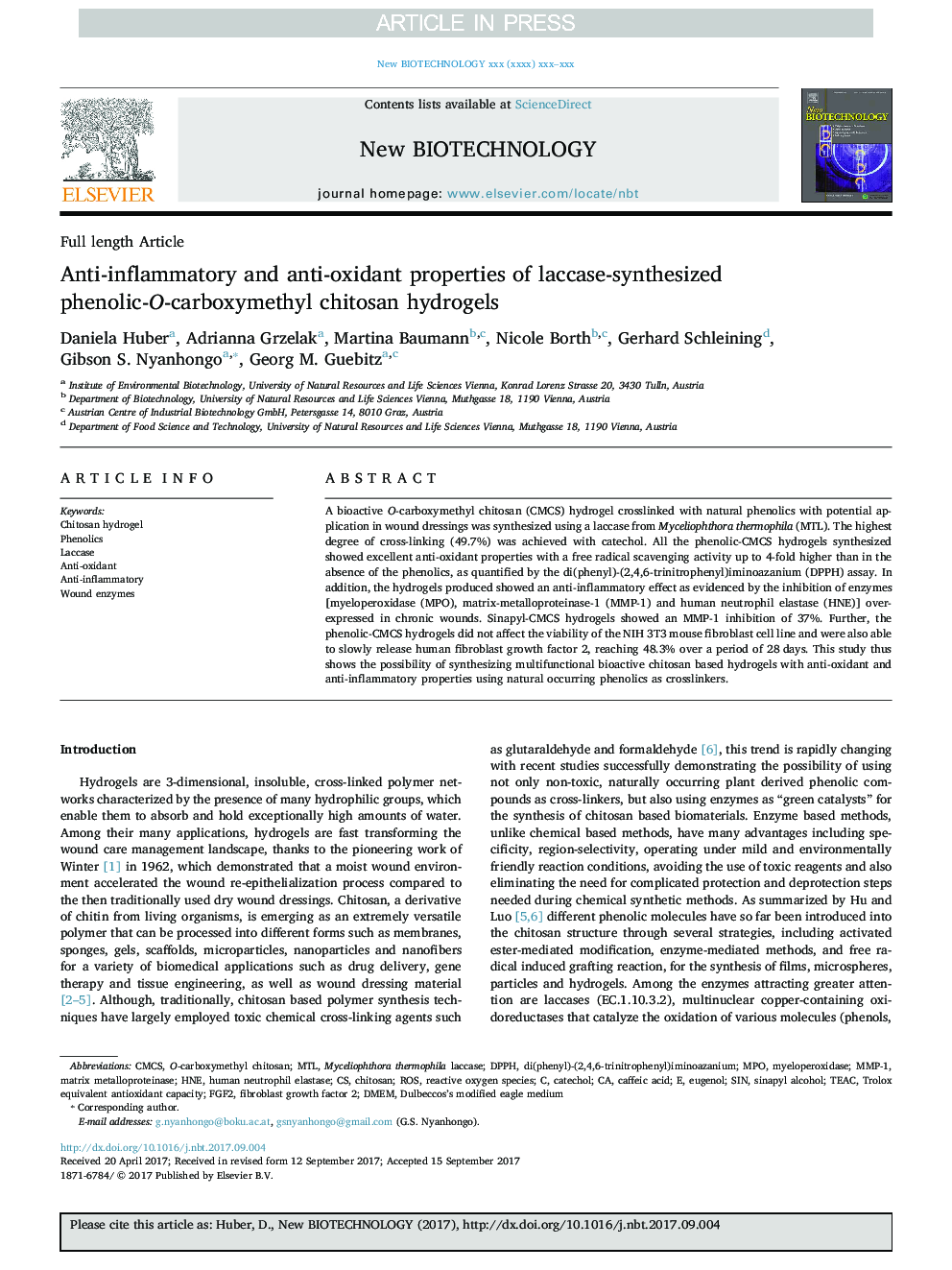| Article ID | Journal | Published Year | Pages | File Type |
|---|---|---|---|---|
| 6494892 | New Biotechnology | 2018 | 9 Pages |
Abstract
A bioactive O-carboxymethyl chitosan (CMCS) hydrogel crosslinked with natural phenolics with potential application in wound dressings was synthesized using a laccase from Myceliophthora thermophila (MTL). The highest degree of cross-linking (49.7%) was achieved with catechol. All the phenolic-CMCS hydrogels synthesized showed excellent anti-oxidant properties with a free radical scavenging activity up to 4-fold higher than in the absence of the phenolics, as quantified by the di(phenyl)-(2,4,6-trinitrophenyl)iminoazanium (DPPH) assay. In addition, the hydrogels produced showed an anti-inflammatory effect as evidenced by the inhibition of enzymes [myeloperoxidase (MPO), matrix-metalloproteinase-1 (MMP-1) and human neutrophil elastase (HNE)] over-expressed in chronic wounds. Sinapyl-CMCS hydrogels showed an MMP-1 inhibition of 37%. Further, the phenolic-CMCS hydrogels did not affect the viability of the NIH 3T3 mouse fibroblast cell line and were also able to slowly release human fibroblast growth factor 2, reaching 48.3% over a period of 28Â days. This study thus shows the possibility of synthesizing multifunctional bioactive chitosan based hydrogels with anti-oxidant and anti-inflammatory properties using natural occurring phenolics as crosslinkers.
Keywords
CmCSO-carboxymethyl chitosanDMEMMMP-1DPPHHNEMTLTEACFGF2MPOROSSinapyl alcoholHuman neutrophil elastaseEugenolsinAnti-oxidantAnti-inflammatoryTrolox equivalent antioxidant capacityfibroblast growth factor 2PhenolicsLaccasematrix metalloproteinasemyeloperoxidaseChitosan hydrogelCatecholCaffeic acidChitosanReactive oxygen species
Related Topics
Physical Sciences and Engineering
Chemical Engineering
Bioengineering
Authors
Daniela Huber, Adrianna Grzelak, Martina Baumann, Nicole Borth, Gerhard Schleining, Gibson S. Nyanhongo, Georg M. Guebitz,
